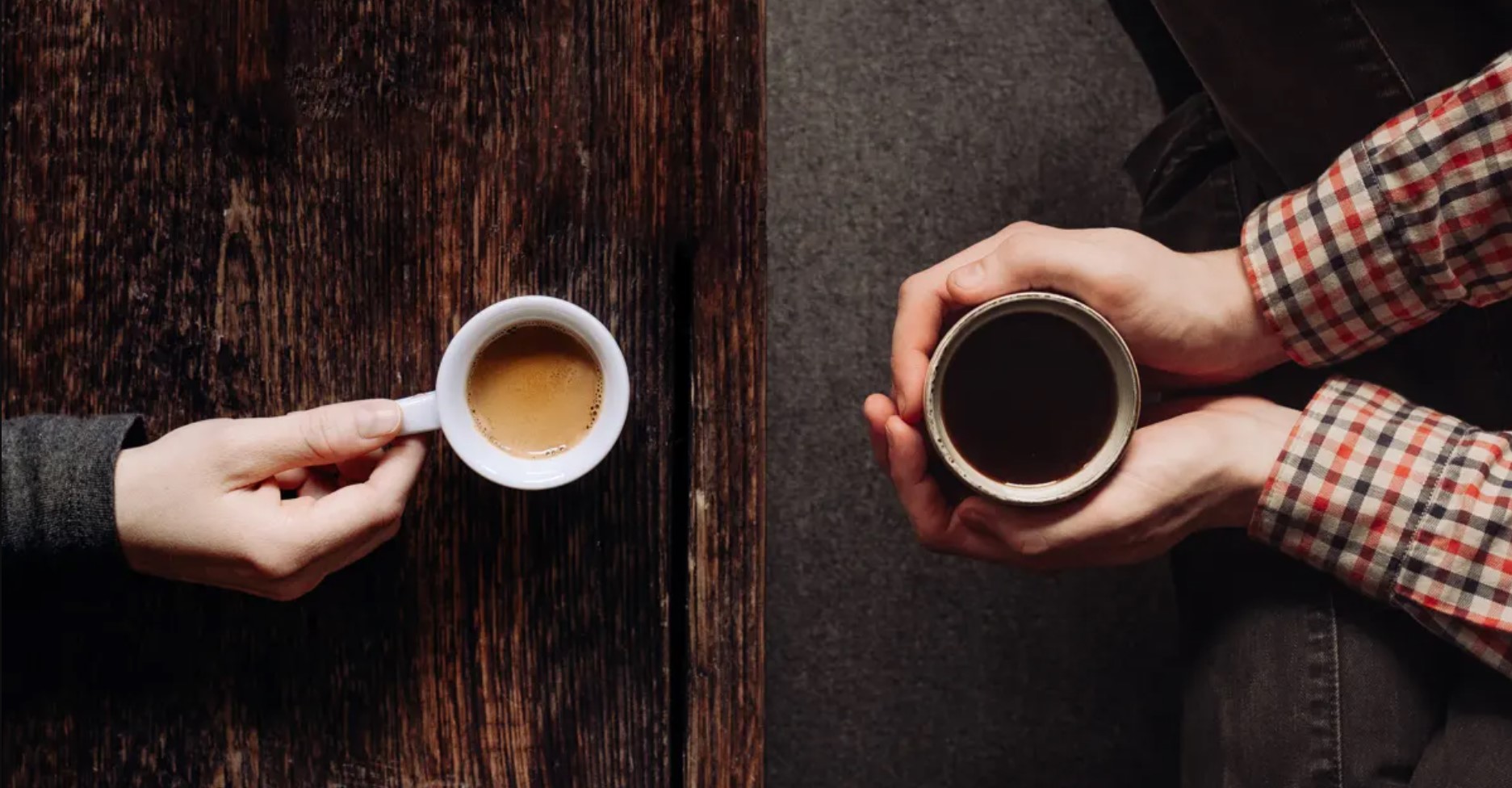Coffee, the world’s most beloved beverage, has a vast array of brewing methods. Two popular choices that often lead to heated discussions among coffee enthusiasts are Espresso and Filter Coffee. Both are loved for their distinct flavors and unique characteristics, but they cater to different tastes and preferences. In this article, we’ll delve into the fascinating realm of Espresso vs. Filter Coffee, exploring their fundamental differences, preparation techniques, taste profiles, and more. So, grab your favorite mug, and let’s dive into the world of coffee!
Espresso: A Bold and Concentrated Elixir
Espresso, derived from the Italian word “pressed-out,” is a concentrated shot of coffee brewed by forcing hot water through finely ground coffee beans. It’s renowned for its intense flavor, rich crema, and robust caffeine kick. Let’s explore the unique aspects of Espresso:
The Preparation Process
To create a perfect Espresso shot, coffee beans are ground to a fine consistency, resembling powdered sugar. The ground coffee is then tamped down firmly into the portafilter to ensure even extraction. Hot water, around 195 to 205°F (90 to 96°C), is forced through the coffee at high pressure, typically 9 bars, resulting in a 1-ounce (30ml) shot of dark, aromatic Espresso.
Taste Profile
Espresso boasts a bold and complex flavor profile, characterized by strong notes of bittersweet chocolate, caramel, and a hint of acidity. The crema, a velvety foam on top, adds a delightful mouthfeel, enhancing the overall experience.
Taste Profile of Espresso:
- Intensity: Espresso offers a bold and intense flavor that lingers on the palate.
- Bittersweet Notes: You’ll experience prominent bittersweet chocolate notes in a well-brewed Espresso shot.
- Rich Crema: The velvety crema adds a creamy texture and enhances the overall taste.
- Caramel Undertones: A hint of caramel undertone balances the bitterness, adding complexity.
- Subtle Acidity: A pleasant acidity cuts through the richness, creating a harmonious taste.
Taste Profile of Filter Coffee:
- Smoothness: Filter Coffee is celebrated for its smooth and approachable taste.
- Balanced Flavors: You’ll notice a well-balanced blend of nutty, fruity, and floral undertones.
- Clean Finish: The slow extraction process results in a clean and pleasant aftertaste.
- Mild Acidity: Filter Coffee has a gentle acidity that complements the overall flavor.
- Aromatic Delight: The aroma of Filter Coffee is captivating and enticing.
Both Espresso and Filter Coffee offer unique and enjoyable taste experiences, catering to different preferences and moods. Whether you prefer the boldness of Espresso or the smoothness of Filter Coffee, each cup promises to take you on a delightful journey through the world of coffee flavors.
Caffeine Content
Despite its potent taste, Espresso actually contains less caffeine per serving compared to other brewing methods. An average shot of Espresso contains around 63 milligrams of caffeine, making it an ideal choice for those who desire a quick energy boost without excessive caffeine intake.
Popular Variations
The versatility of Espresso allows for a myriad of popular variations, such as Cappuccino, Latte, Macchiato, and Americano. Each variation combines Espresso with varying amounts of steamed milk, foam, and water, catering to different preferences.
| Popular Variations | Espresso | Filter Coffee |
| Cappuccino | Equal parts Espresso, steamed milk, and foam. | Not applicable (Filter Coffee is typically served black). |
| Latte | A shot of Espresso with a generous amount of steamed milk. | Not applicable (Filter Coffee is typically served black). |
| Macchiato | A shot of Espresso “stained” with a small amount of milk foam. | Not applicable (Filter Coffee is typically served black). |
| Americano | A shot of Espresso diluted with hot water. | Not applicable (Filter Coffee is typically served black). |
| Iced Coffee | Chilled Espresso served with ice and milk or cream. | Chilled Filter Coffee served with ice. |
| Cold Brew | Coarse-ground coffee steeped in cold water for an extended period. | Coarse-ground coffee steeped in cold water for an extended period. |
| Flavored Variations | Various flavored syrups added to Espresso. | Various flavored syrups added to Filter Coffee. |
The table above showcases the various popular variations of Espresso and Filter Coffee. Espresso offers a wide range of delightful options, where milk and foam are creatively combined with the bold Espresso shot. In contrast, Filter Coffee variations mainly revolve around the way it’s served, such as iced or cold brew, or the addition of flavored syrups for a personalized touch. Each variation presents a unique taste experience, catering to different preferences and occasions.
Filter Coffee: A Smooth and Aromatic Delight
Filter Coffee, also known as Drip Coffee, is a more traditional brewing method that involves pouring hot water over coarser coffee grounds, allowing it to slowly drip through a filter. This produces a milder, smooth, and aromatic cup of coffee. Let’s explore the unique aspects of Filter Coffee:
The Brewing Process
The Brewing Process of both Espresso and Filter Coffee involves distinct techniques that result in unique taste experiences:
- Espresso Brewing Process: Brewing Espresso is a precise and artful process. It starts with finely grinding coffee beans to a consistency resembling powdered sugar. The ground coffee is then carefully tamped down into a portafilter, ensuring uniform extraction. Hot water, heated to around 195 to 205°F (90 to 96°C), is forced through the tightly packed coffee grounds at high pressure, typically 9 bars. This rapid extraction produces a concentrated and aromatic 1-ounce (30ml) shot of Espresso with a rich crema on top, a prized layer of foam that adds a velvety texture to the coffee. The entire process takes only about 25 to 30 seconds, making Espresso the go-to choice for a quick, intense caffeine kick.
- Filter Coffee Brewing Process: Brewing Filter Coffee, on the other hand, is a more relaxed and gradual affair. Medium-coarse coffee grounds are placed in a paper or metal filter within a drip coffee maker or a pour-over apparatus. Hot water, just below boiling point, is poured evenly over the grounds, allowing it to slowly percolate through and collect in a carafe below. The slower extraction process results in a larger volume of coffee with a smooth and well-balanced taste. Filter Coffee is known for its clean finish and the ability to highlight the subtle flavors of the coffee beans’ origin. It offers a more leisurely and enjoyable coffee experience, perfect for those who prefer a milder yet flavorful cup.
- Unique Characteristics: The brewing processes of Espresso and Filter Coffee have a profound impact on the final cup’s taste and characteristics. Espresso’s high-pressure extraction concentrates the flavors, resulting in a bold and robust profile with a delightful crema. On the other hand, Filter Coffee’s slow and gentle extraction allows for a more nuanced and delicate flavor, showcasing the diverse notes of nuts, fruits, and floral undertones. The choice between the two brewing methods ultimately depends on personal preferences, with Espresso catering to those who crave intensity and Filter Coffee offering a smoother and more approachable experience.
Taste Profile
Filter Coffee is celebrated for its clean, well-balanced taste, with pronounced notes of nuts, fruits, and floral undertones. The slow brewing process allows for a more nuanced extraction of flavors, resulting in a delightful and approachable brew.
FAQs
- Is Espresso stronger than Filter Coffee? Espresso may taste stronger due to its concentrated nature, but Filter Coffee typically contains more caffeine per serving.
- What is the ideal Espresso shot volume? An ideal Espresso shot should yield approximately 1 ounce (30ml) of liquid.
- Can I use Espresso to make a regular coffee? Yes, you can dilute Espresso with hot water to create an Americano, a milder version of black coffee.
- Is Filter Coffee less flavorful than Espresso? Filter Coffee offers a different flavor profile, focusing on balanced and nuanced tastes rather than the intense boldness of Espresso.
- Which brewing method is more cost-effective? Generally, Filter Coffee is more cost-effective as it requires fewer coffee beans per serving than Espresso.
- Can I use the same coffee beans for both Espresso and Filter Coffee? Absolutely! Experimenting with the same beans in different brewing methods can yield exciting results.
In conclusion, Espresso and Filter Coffee stand as two distinct brewing methods, each offering a delightful coffee experience in its own way. Espresso boasts a bold, concentrated flavor with a velvety crema, perfect for those who seek a quick and intense caffeine kick. On the other hand, Filter Coffee presents a smooth and aromatic delight, showcasing a wide range of subtle flavors that can be savored at a more leisurely pace.
Whether you prefer the strong, short shot of Espresso or the slow, nuanced journey of Filter Coffee, both options have their unique charm that caters to diverse tastes. So, the next time you find yourself in a coffee shop, embrace the variety and explore the world of coffee one cup at a time.

